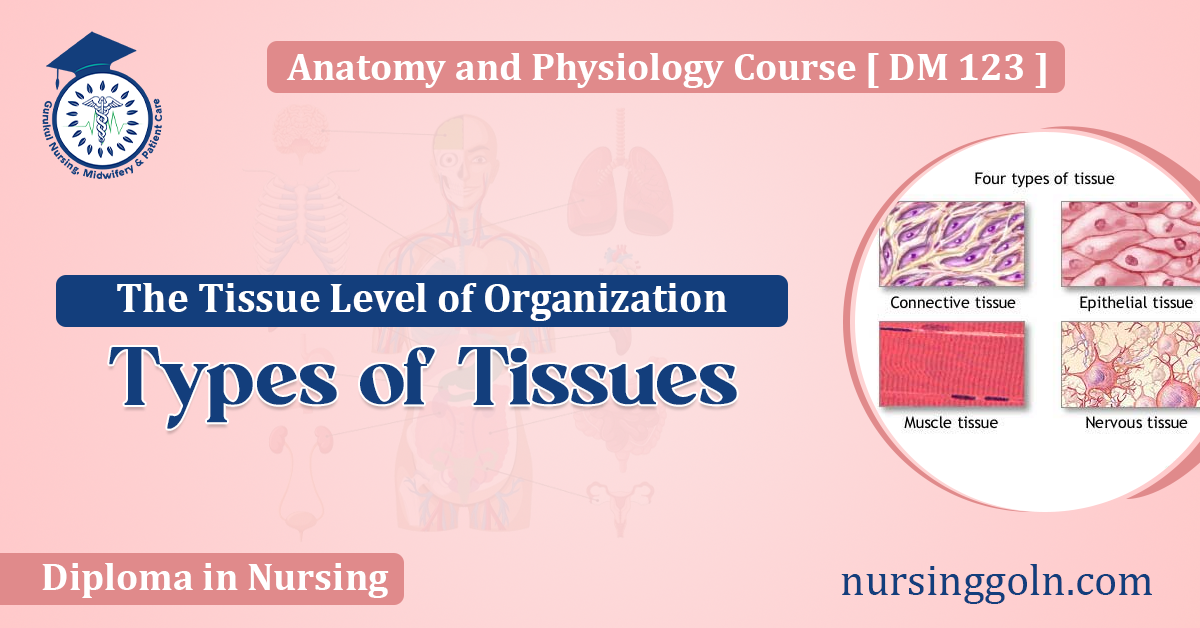The human body is an intricate and complex system, composed of millions of individual cells. These cells don’t function in isolation; instead, they are organized into a system of tissues that work collectively to perform specific functions. At the tissue level of organization, cells with similar functions are grouped together. This article delves deep into the tissue level, exploring the major types of tissues and how they contribute to the overall functioning of our bodies.
Types of Tissues: The Tissue Level of Organization
What is a Tissue?
A tissue is a group of similar cells that come together to perform a specific function. These cells often have a similar origin during embryonic development. Tissues offer a higher level of structure than individual cells and are an essential intermediate level of organization between cells and organs.
Major Types of Tissues
There are four primary tissue types in the human body:
- Epithelial Tissue
- Connective Tissue
- Muscle Tissue
- Nervous Tissue
Let’s delve deeper into each type:
1. Epithelial Tissue
Epithelial tissue, commonly known as epithelium, covers the body surface and lines its cavities. This tissue forms a barrier between the external environment and the interior of the body and plays a crucial role in protecting, secreting, and absorbing.
Characteristics of Epithelial Tissue
- Cellularity: Composed almost entirely of closely-packed cells.
- Polarity: Has a top (apical) surface and a bottom (basal) attached surface.
- Supported by Connective Tissue: The basal surface is attached to a basement membrane.
- Avascular but Innervated: Contains no blood vessels but has nerve endings.
- High Regeneration Capacity: Due to its function (like skin exposure), cells often need to be replaced.
Types of Epithelial Tissue
Based on the number of layers and shape of cells:
- Simple Epithelium: Single layer of cells.
- Stratified Epithelium: Multiple layers of cells.
- Squamous: Cells are wider than tall (like pancakes).
- Cuboidal: Cells are as tall as they are wide.
- Columnar: Cells are taller than they are wide.
2. Connective Tissue
As the name suggests, connective tissue primarily supports and binds other tissues. It has various functions, including insulating, storing reserve fuel, and transporting substances within the body.
Characteristics of Connective Tissue
- Different Degrees of Vascularity: Some types like cartilage are avascular, while others like adipose tissue have a rich supply of blood vessels.
- Extracellular Matrix: Unlike other tissues, connective tissue is mainly composed of non-cellular material, which varies in consistency (from solid to fluid).
Types of Connective Tissue
- Connective Tissue Proper: Includes ligaments and fat.
- Cartilage: Tough yet flexible tissue that covers the ends of bones at joints.
- Bone Tissue: Hard tissue that supports and protects organs.
- Blood: The fluid tissue that transports oxygen, nutrients, and wastes.
3. Muscle Tissue
Muscle tissues are characterized by their contractility. Their primary function is to produce force and cause motion, whether it’s movement of the body itself or movement of substances through the body.
Types of Muscle Tissue
- Skeletal Muscle: Attached to bones and causes body movement. They are striated and can be controlled voluntarily.
- Cardiac Muscle: Makes up the walls of the heart. They are also striated but cannot be controlled voluntarily.
- Smooth Muscle: Found in the walls of hollow organs like the intestines and uterus. They are not striated and cannot be controlled voluntarily.
4. Nervous Tissue
Nervous tissue is the main component of the nervous system, which includes the brain, spinal cord, and nerves. This tissue regulates and controls bodily functions and activity.
Characteristics of Nervous Tissue
- Neurons: Highly specialized nerve cells that generate and conduct nerve impulses.
- Neuroglial Cells: Cells that support, insulate, and protect neurons.
Functions of Nervous Tissue
- Sensory Input
- Data Processing
- Motor Output
The Importance of Tissues
Each tissue type has a specific role in the body. The interplay between them is what allows the human body to function as an integrated whole. Whether it’s the epithelial tissue that offers protection against pathogens, the muscle tissue allowing us to walk and talk, the connective tissue holding our organs in place, or the nervous tissue letting us feel and think — every tissue type is indispensable.
Conclusion
The tissue level of organization is crucial for understanding the intricate connections and systems that make up the human body. These tissues, despite being distinct in their functions and characteristics, work collectively to ensure the body functions in harmony. By understanding the roles and characteristics of these tissues, we can appreciate the complexity and beauty of human physiology and anatomy. Whether you’re studying medicine, biology, or just curious about the human body, a deeper dive into the tissue level of organization offers invaluable insights into the building blocks of life.
